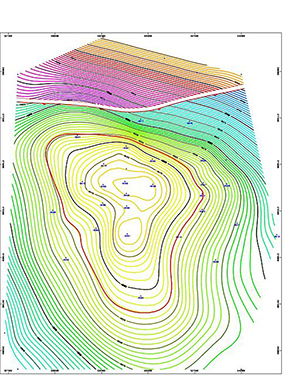EPJ E Highlight - No assumptions needed to simulate petroleum reservoirs
- Details
- Published on 04 June 2019

Hydrocarbons trapped within porous media are easier to model with computer simulations than researchers previously assumed – a discovery that opens up new possibilities for thermodynamics research.
Hidden deep below our feet, petroleum reservoirs are made up of hydrocarbons like oil and natural gas, stored within porous rock. These systems are particularly interesting to physicists, as they clearly show how temperature gradients between different regions affect the gradients of fluid pressures and compositions. However, because these reservoirs are so hard to access, researchers can only model them using data from a few sparse points, meaning many of their properties can only be guessed at. In a new study published in EPJ E, physicists from France and Vietnam, led by Guillaume Galliero at the University of Pau, have found that this guesswork actually isn’t necessary. They show that if the right choices are made when constructing models, no assumptions are needed in order to calculate the impact of temperature gradients on pressure and composition gradients.
Ultimately, Galliero’s team developed an equation that fully expresses the pressure gradient of petroleum reservoirs, which they then used to determine variations in hydrocarbon composition throughout the mixture. Drawing on this main equation, they were able to identify several special cases where the pressure gradient is influenced by other properties, including the residual entropy of the fluid – the point at which the permeability of the rock becomes lower than a certain threshold. When this happens, temperature gradients generate pressure gradients which are proportional to this residual entropy. This implies that the pressure gradients across small parts of the fluid are generated by the balance between their own residual entropy, and that of the fluid as a whole.
Galliero and his colleagues started from basic principles of thermodynamics, then validated their conclusions using computer simulations. Their work could prove invaluable to petroleum engineers and geoscientists exploring the intriguing thermodynamic properties of petroleum reservoirs.
F. Montel, H. Hoang, G. Galliero (2019), Linking up pressure, chemical potential and thermal gradients, Eur. Phys. J. E 42:65. DOI 10.1140/epje/i2019-11821-0




